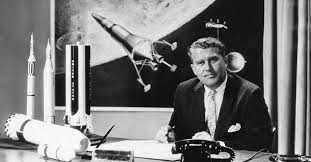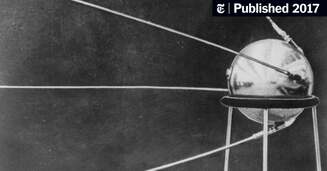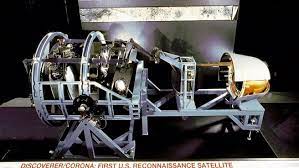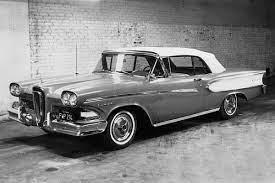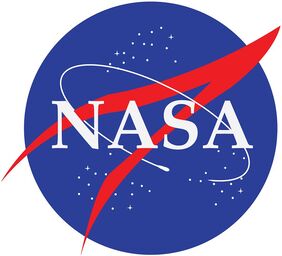Interest in Rocket Science
|
The Cold War was a conflict between the United States and the Soviet Union in everything possible, even space. With the end of World War 2, both sides were desperate for rocket science. Scientist from Germany were snatched up by both the United States and the Soviet Union as both sides were desperate for an advance in their rocket science technology. The United States was under immediate pressure due to the difference between their scientists. The Soviet Union received scientists that already had discovered technology to use in space, while the United States were already so far behind due to their scientists only just projecting possible ideas.
|
Wernher von Braun- A Nazi Scientist who would end up working for NASA in the United States
|
Fear of the Soviet Union
|
Sputnik 1 satellite made by the Soviet Union
|
On October 4, 1957 the Soviet Union launched the satellite known as "Sputnik 1" into orbit. It was about the shape of a basketball, weighing 183lbs, and orbited the earth in approximately 98 minutes. The Americans were quick to pick up the signal and fear immediately struck them. From the Americans perspective they saw a beeping object that the Soviet put into space have the capability to float over the United States. The fear of a nuclear attack became intense. The Soviets had the capability to put a nuclear weapon into space and over the United States. US citizens feared the possibility of this attack and the rush to compete with the Soviets became evident.
|
Eisenhower's Secret Project
|
Eisenhower was in fact not afraid of the Soviet's recently launched satellite. Instead he saw it as a way of space freedom, sort of a declaration of space as free territory for all. Eisenhower, along with, the Air Force, the CIA, and a few other select people were creating a secret surveillance device to launch into orbit. The secret name for the device was CORONA. Eisenhower wasn't worried about winning the overall Space Race. He thought it was more important to collect more information on the Soviet Missile locations, which was the goal of the CORONA project. The satellite was able to collect information on the Soviets and China from 1959-1972, and was the United States' first reconnaissance satellite.
|
CORONA satellite (1959-1972)
|
|
Edsel automobile from Ford in 1958
|
America's Spark
"No event since Pearl Harbor set off such repercussions in public life," wrote historian Walter A. McDougall in The Heavens and the Earth—A Political History of the Space Age. Sputnik was sort of a spark for america's economy overall. Confidence of the american citizens in their technology, politics, values, and military was at an all time low. The impact caused the funding to be massively increased and reworked the way they were developing science and technology. One of the advances was in microtechnology which is used in today's laptops, phones, and desktop computers. Even the internet owes the beginning of its development to the need for faster research caused by Sputnik. Even the automobile business was impacted. The engineers were seen as wasting time of unnecessary pleasures instead of new age technology. Cars like the Edsel automobile and the tail fins began to cease production. The economy of America was launched into an accelerated need to catch up, and the americans were ready.
|
Creation of NASA
|
In response to the Soviet's advancement in space age technology the United States' Congress passed legislation on July 29, 1958, allowing for the creation of the National Aeronautics and Space Administration (NASA). NASA was a civilian agency created in order to coordinate the future of America's space activity. The United States and its citizens always seemed to have a pride for being ahead in technology, so it was quite embarrassing to realize how far they had fallen behind. The creation of NASA was the United States full response and plan to winning the new Space Race. Along with NASA's creation the US launched its first satellite, Explorer 1. It was the United States first satellite to orbit the earth and gave American citizens hope, when all they had was fear.
|
Original NASA Logo (1959-1975)
|
Work Cited
- Huang, Nancy, et al. “The Intersection of Technology, Innovation & Creativity.” Now. Powered by Northrop Grumman, https://now.northropgrumman.com/how-technology-from-the-space-race-changed-the-world/.
- “Space Race.” Wikipedia, Wikimedia Foundation, 17 Jan. 2022, https://en.wikipedia.org/wiki/Space_Race.
- email, adminSend an, et al. “How Did the Space Race Benefit Us Society.” Lisbdnet.com, 2 Dec. 2021, https://lisbdnet.com/how-did-the-space-race-benefit-us-societ/#How_Did_The_Space_Race_Benefit_Us_Society.
- “The Space Race.” The Cold War, 30 Sept. 2020, https://alphahistory.com/coldwar/space-race/.
- History.com Editors. “The Space Race.” History.com, A&E Television Networks, 22 Feb. 2010, https://www.history.com/topics/cold-war/space-race.
